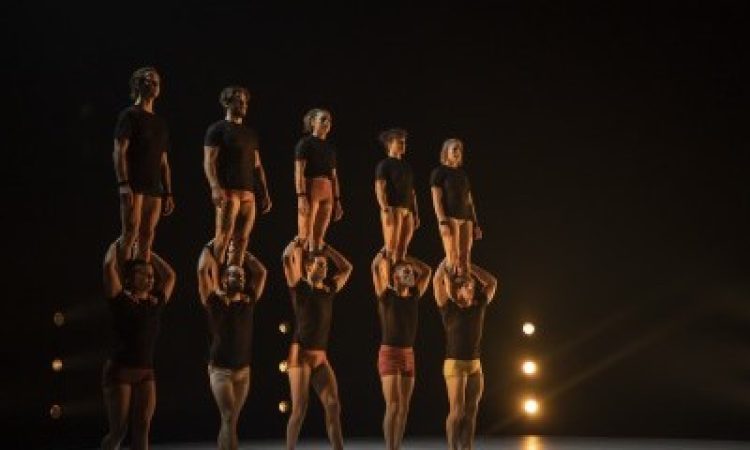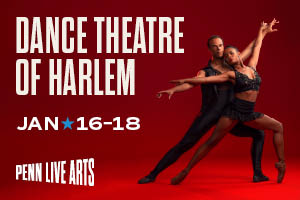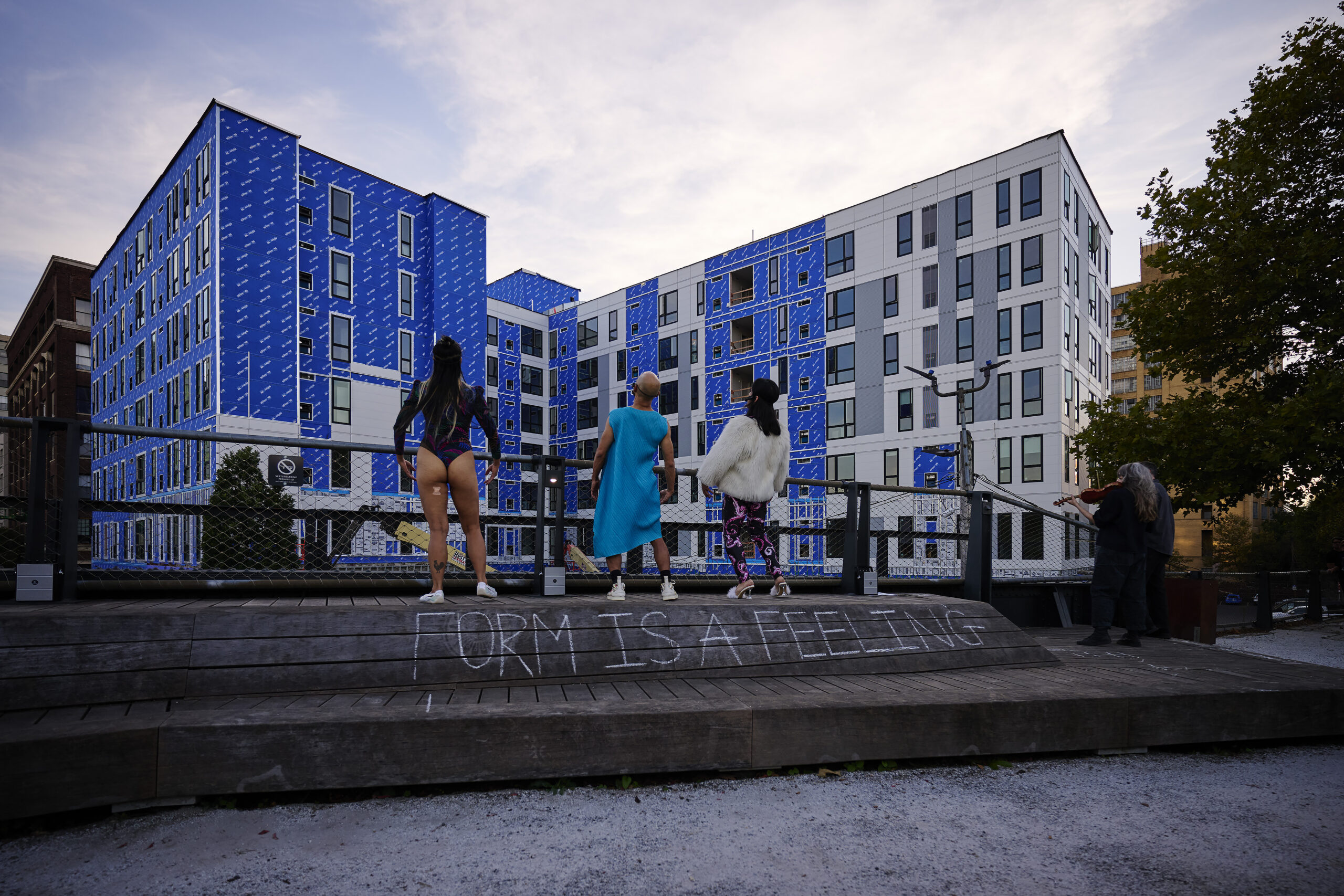Seeing a human being sail through the air to be caught by another takes my breath away. The thrill of implausibility courses through my body. Circus plays with my expectations in their purest, lizard-brain form. And when I grow familiar with a company, my memories also color my expectations. The Australian company Circa seemed to be intentionally playing off of these phenomena with Humans 2.0, a sequel to its popular work, Humans. Penn Live Arts’ promotional materials hailed the show as an “exhilarating return” for the company, which presented the U.S. premiere of Humans in its theater in 2018.
I had enjoyed Humans, marveling at the postmodern nature of its staging. Where circus often maintains a linear arc and classical presentation— the small tricks lead up to the big trick, everything happens in the brightly lit center stage—Circa uses a different approach. At moments in both Humans and Humans 2.0, the stage erupted in movement with limbs flying everywhere, the whole cast performing different partnered tricks. The simultaneity of it de-centered the “trick” aspect, allowing me to view what was happening as movement.
My memories of Humans included a rich texture of group movements, simple but profound, peppered with compelling smaller scenes. In one striking sequence, an artist performed a series of flips, landing on his shins! I’ve been talking about that for years. So, my expectations for Humans 2.0 were high.
And I enjoyed it. Gasps, goosebumps, leaning forward in my chair. I was also often bored or confused. Music by DJ Ori Lichtik provided a somewhat stark pulsing background. The sound had a monotonous, lulling effect on me, so I was surprised to learn that he was manipulating it with live effects. All the action took place on a large circle of white marley floor ringed with floodlights (hello, modern circus ring). In the opening section, the performers swept around the circle, shoulder to shoulder, like a human minute hand on a clock (recalling Maarten Baas’ Sweeper’s Clock). I remembered this motif from Humans but noticed this time the unevenness of the line, moments where performers had to “fudge it” to squeeze between others. I didn’t know whether the goal was a clean aesthetic line or a casualness to performing the task; the unknown intent made it feel murky.
During some sections, the stage suddenly glowed bright red. The performers danced jerkily to jauntier beeps and boops from Lichtik. A change in tone! I thought, watching them balance on each other while little blips of energy shot out a dancing elbow or knee. The red lighting stayed for longer than I expected and, at the risk of sounding like an old fogey, it hurt my eyes to focus on the movement. The red came back later on, without an aesthetic or narrative tie that I could find between the sections.
While all the performers were versatile, most of the men were bases for most tricks and most of the women flew. I was drawn to Fran Alvarez and Georgia Webb who played against gender stereotypes with Alvarez primarily flying tricks and Webb mostly basing. Alvarez moved with grace and control, not injecting extra drama into what he was doing, allowing the movements (like an incredible back-bend into empty space, standing on the third level of a human tower) to speak for themselves. Webb smiled graciously and honestly throughout the performance. In one explosive moment, she performed a huge centrifugal worm into and out of the floor, head first, with another performer whipping her around one-handed.
But noticing the performers as individuals brought up other questions. How can you call a show Humans when it contains no dark-skinned artists? The cast consisted of light-skinned Australians, Europeans, and Latinx performers from South America. This bothered me, considering the show’s obvious professing of universality.
I felt swept through Humans 2.0, enjoying particular moments immensely but lulled by the consistency of the current. The solo and duet sections lacked the particular character they had in Humans. I didn’t need a narrative throughline or a scenario in each section, but great performance, as abstract as it might be, gives me a sense that only that could happen in that moment. A sense of inevitability, maybe, or just the rightness of the choice. I enjoyed many of the choices made in Humans 2.0 but didn’t feel that satisfying rightness.
The title Humans 2.0 implies building on what came before, raising the stakes. That makes me want more: more death-defying, more surprising, more satisfying. I didn’t get more from Humans 2.0. In the build-up of expectations, I lost the humanity of what the performers were doing. I wish they’d been given a container that didn’t need to profess human universality, but let them explore what it means to be human without providing the answers.
Humans 2.0, Circa, Penn Live Arts, March 11-12.






